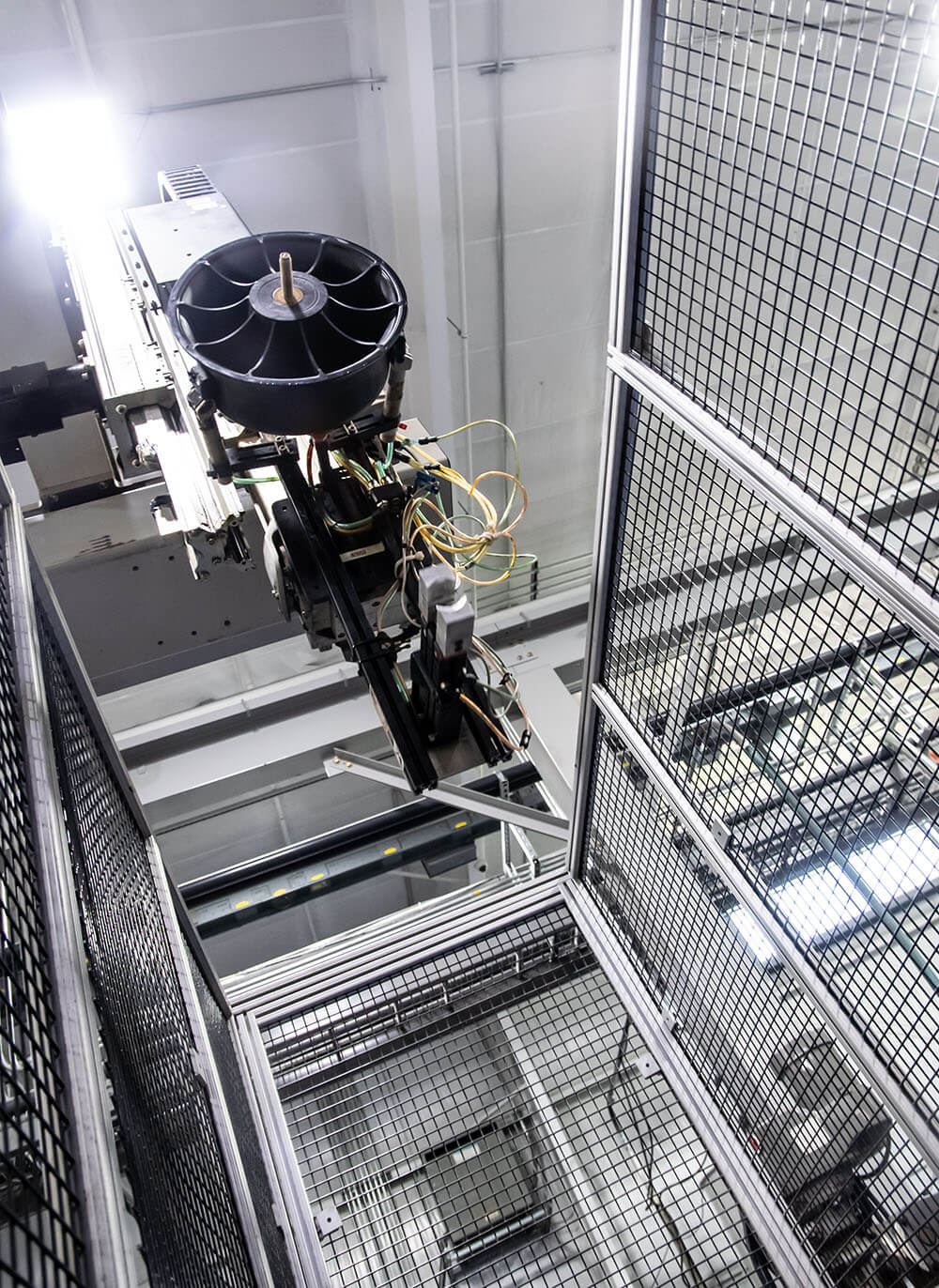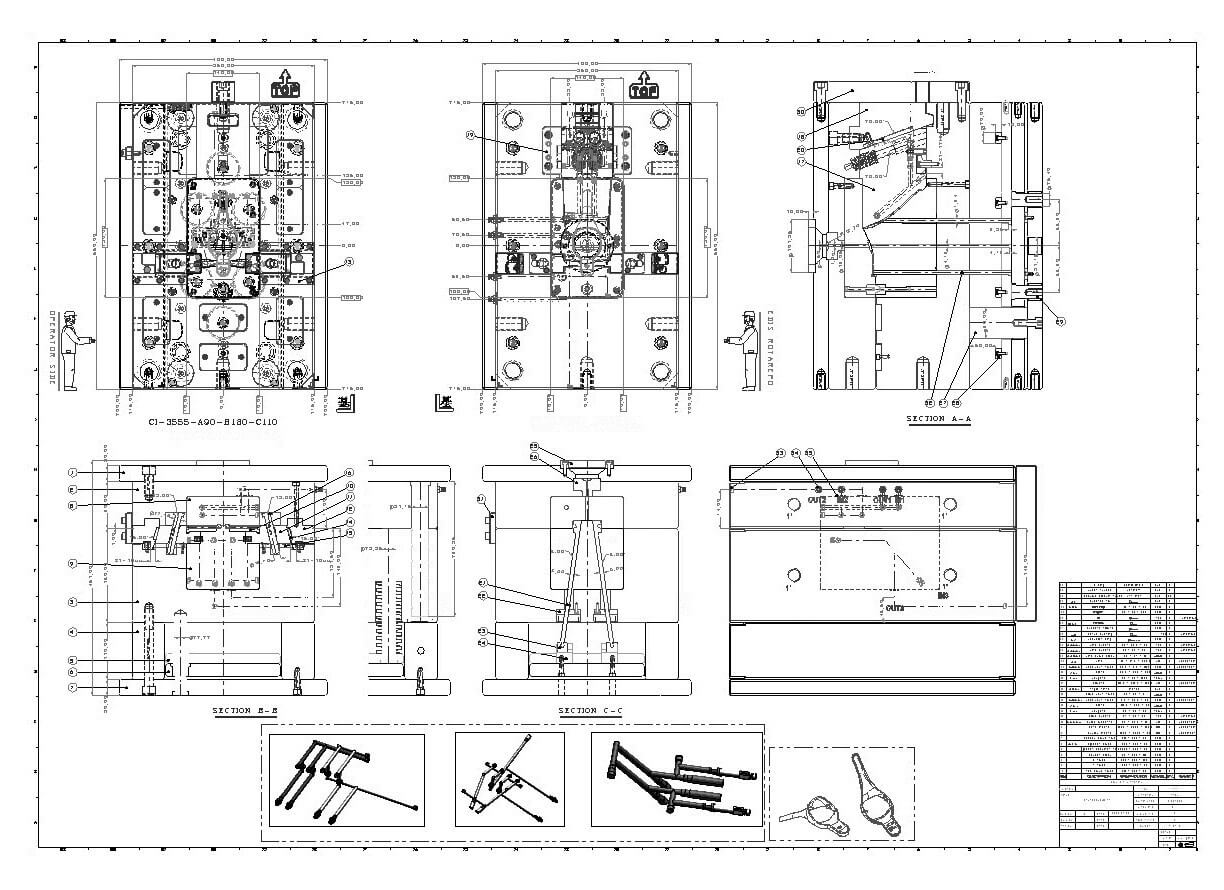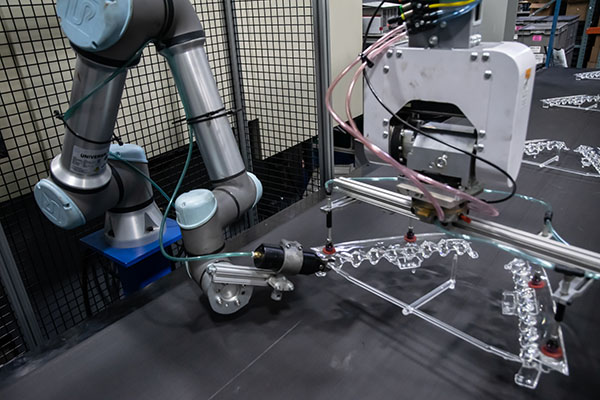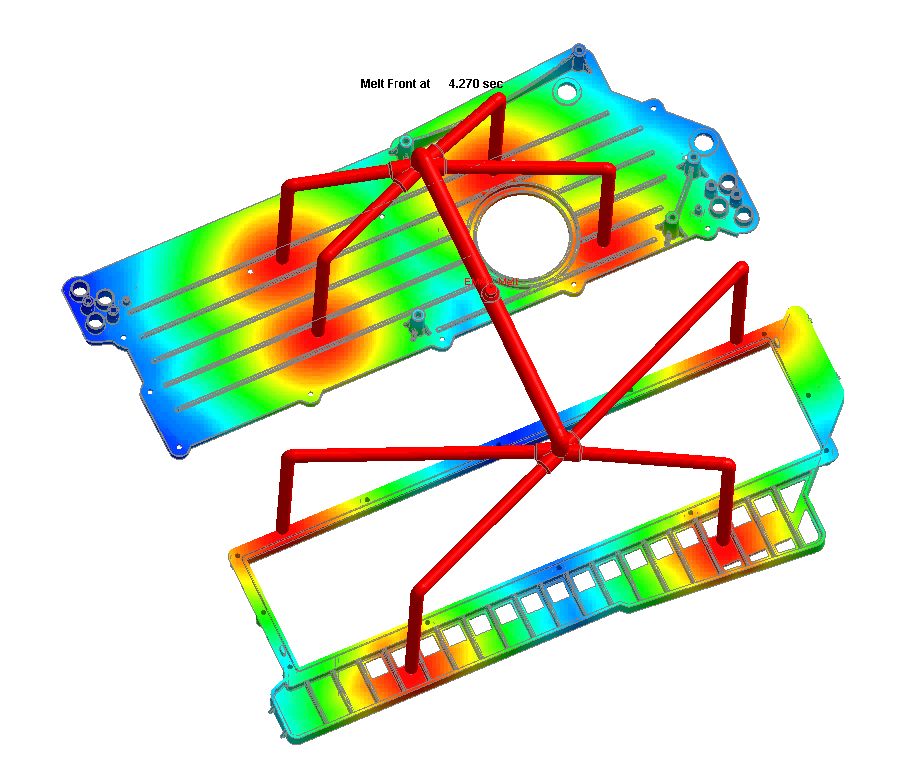Quality Made Us Global
Product Development
Product Design for Plastic Injection Molding Projects
Any plastic injection molding project necessarily begins with the design of the product, component, or part required. When the product development process is divorced from the ultimate manufacturing process that will be used to make it, getting to the finish line of full production runs can become both difficult and frustrating. Your company may make a significant investment into designing what you need, only to be told by one injection molding provider after another that the design is not going to work or will need modifications to work in their production environment.

A Strategy and Solution for Plastic Injection Molding Product Design
The solution to this pain point of a disconnect between product design and manufacturing is surprisingly simple: Find your preferred injection molding service contractor first and get them involved to collaborate with you on the product development and design process from the beginning. At Global Plastics, this is what we call design for manufacturing (DFM). It is an important strategy that will save your company time and money, not to mention prevent many hassles and headaches along the way to quality finished product.

How Collaborative DFM Works in Your Favor
Design for manufacturing (or manufacturability) is a logical way to smooth out what might otherwise become a very bumpy road to a molded plastic product produced at scale. Your designers know what they want the product to do, its initial specifications, the environmental factors of its intended application, and the overall desired aesthetic of the product. Our engineers have the deep expertise in the injection molding manufacturing process to know what aspects of the initial product ideation could or will be problematic to execute.
In other words, the DFM strategy is one in which your designers and our engineers work in collaboration so potential problems are identified and solved in the product design phase as opposed to much further down the line where it becomes increasingly costly to resolve them in terms of both time and money. It’s a win-win scenario that makes good business sense.
Tooling a production mold in steel is often the most expensive piece of the plastic injection molding project puzzle. You want to know your investment is going to result in the product, component, or part you need before you tool a mold. Design validation in the DFM process is the solution. At its heart, DFM is a set of principles used in a collaborative process with the client customer by which we ensure the lowest possible unit costs and the highest possible quality of the final product. The word validation doesn’t mean a rubber stamp on your design ideas—quite the opposite. It means a rigorous challenge of the product design in order to identify the optimal mix of low cost and high quality during product development.
Not every DFM principle is equally valid or applicable to every plastic injection molding project. But the principles that might apply to any given project include the following:
- Begin working collaboratively with injection molding partners during the product design process.
- Have diverse perspectives in challenging the design (designers, engineers, materials experts, mold makers from tooling, and so on).
- Minimize number of parts
- Modular design
- Minimize number of required machine operations
- Use standard components wherever possible
- Explore options for multi-use, multifunctional parts
- Maximize compliance with applicable regulations
- Minimize need for post-production, secondary operations
- Design with shipping and warehousing in mind
The above principles are just a starting point for everything we keep in mind during the product development and design phase of your plastic injection molding project.
Design Optimization for Injection Molding


The more complex the design, the greater the chance of running into problems. We’re always asking ourselves the question of whether a simpler, less complex design is possible. Unnecessary complexity is expensive. We don’t shy away from complexity, but we do question it to ensure it’s both justified and feasible in manufacturing. A few things we keep in mind around design optimization include the following:
- Features: Ribs, posts, bosses, slides, walls, texture, and so on. These all affect how much draft is needed.
- Shrinkage: Accounting for the shrinkage that will occur when the plastic cools is essential, and it varies by the type of plastic resin used.
- Wall thickness: Uniform wall thickness is always the preference for structural integrity. While it seems logical that thicker walls mean greater strength, the thicker you go the more vulnerable you are to defects such as sinks and warpage. Ribs are the way to gain wall strength while still minimizing the amount of material used rather than going with thicker walls.
- Raw materials selection: There are thousands of different plastic resins available for injection molding today, though many are just small differences in formulations. These resins differ in various characteristics such as chemical resistance, temperature tolerance, strength, hardness, transparency, and so on. This is important because there are likely multiple potential resins for your project. We help determine the optimal choice in terms of cost and suitability to achieve the desired product quality.
The above barely scratches the surface of what we look at when optimizing product design for plastic injection molding. We also determine whether your product is best produced with standard injection molding or blow molding.
Plastic injection molding is relied on by many companies for the manufacturing of plastic products, parts, and components because it has the potential to be the most cost effective solution for large volume production runs. However, not all injection molding providers are created equal. Is the provider committed to DFM principles? Does it have its own tooling department in-house to make molds? Are their injection molding machines state-of-the-art? The answer to all these questions at Global Plastics is a resounding YES. If it’s time to start working with a true partner for your plastic injection molding needs from design to production and beyond, we hope to hear from you through the contact us form on our website.
Prototyping and testing is faster and more cost-effective when done by the full-service partner who will also handle production runs.